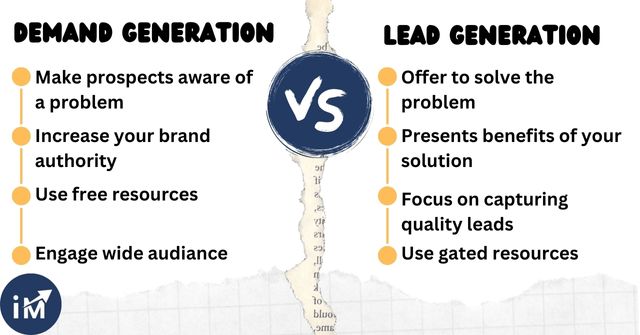Demand Generation vs. Lead Generation: The Key Differences and Benefits
Demand Generation and Lead Generation are two of the most important things to consider if you want to find potential customers and turn them into actual buying ones during the process. Both of these strategies are effective. In fact, a website’s lead conversion rate can go up to 4% while it’s 2.4% for an average webpage.
If I were to ask, this is good enough for small local businesses who want to enter the “Internet of Things” to develop great marketing. And if partnered with other digital marketing strategies like PPC, content creation, SEO packages, etc., sales are more likely to become insane!
What is Demand Generation and its benefits?
Demand generation is a marketing strategy designed to create a demand for your product or service. It is an all-inclusive approach that involves creating brand awareness, generating leads, and nurturing those leads until they convert into customers.
The benefits of Demand Generation are many but building a steady stream of customers is considered the most favorable. Since demand generation allows you to establish your brand as a thought leader, it can result in a larger pool of leads that you can then foster through targeted marketing campaigns and content creation. Powerful, isn’t it?
Another benefit of demand generation is helping your business improve lead quality which are higher-quality leads that are more likely to convert into paying customers.
Lastly, demand generation can help to shorten the sales cycle. Because as you build relationships with budding customers early on in their buyer’s journey, you are already making it easy for them to understand your brand.
What is Lead Generation and its benefits?
Lead Generation, on the other hand, is the process of identifying and attracting potential customers for your business. You can do this by doing your research about your target market, creating great content tailored to the latter, choosing the right promotional channels (LinkedIn unite!), and scoring high-quality leads.
Unfortunately, 68% of companies today still struggle with Lead Generation. This may be because they didn’t establish trust and credibility in their brand first – resulting in spending more time on finding leads than focusing on closing deals with “within reach” customers.
The benefits of lead generation strategy are effective targeting, increased business visibility, customer loyalty, developed relevant marketing campaigns, and staying ahead of industry competition.
Key Differences between Demand and Lead Generation
Demand generation vs. Lead generation – though they are often used interchangeably, they are not the same thing. Here’s why:
Demand generation is focused on creating awareness and interest in your product or service. Whereas, Lead generation is focused on turning the “brand-aware” public into potential customers.
To make matters more interesting, demand generation activities include content marketing, social media marketing, public relations, and advertising. Lead generation, on the other hand, includes activities like email marketing, lead magnets, and online forms. See where I’m at?
Additionally, demand generation is a ‘general’ strategy while lead generation is more personalised. Both strategies are important for any business looking to grow, but they require different tactics and approaches. And to help you get off on the right foot, asking for help from a professional digital marketing agency is your best bet.
